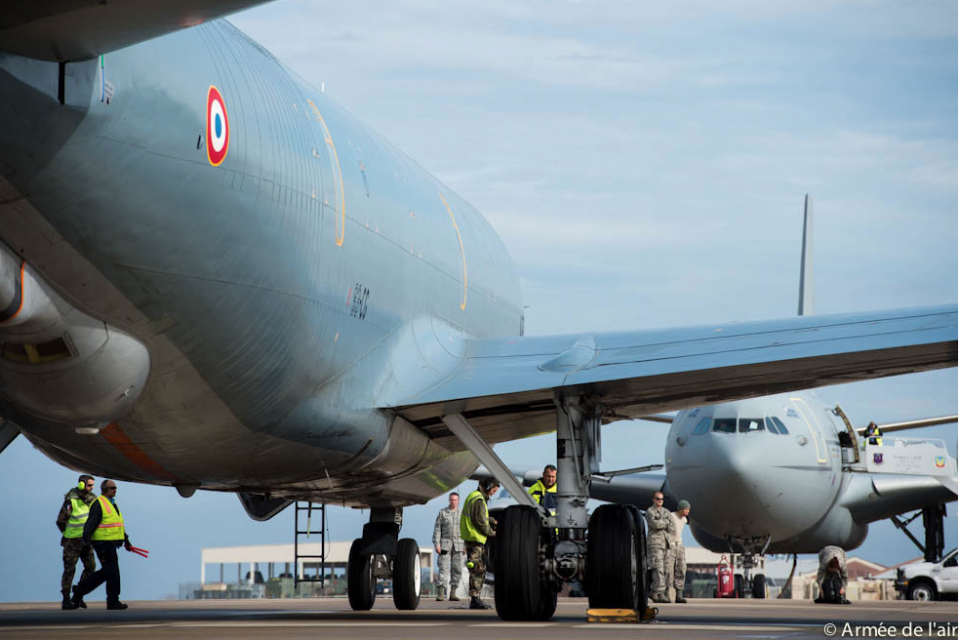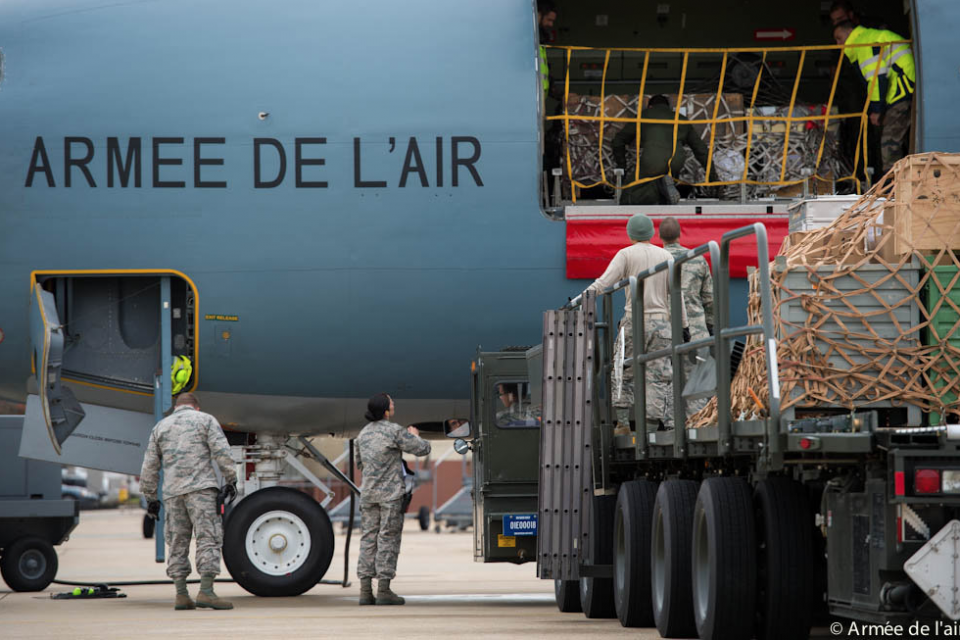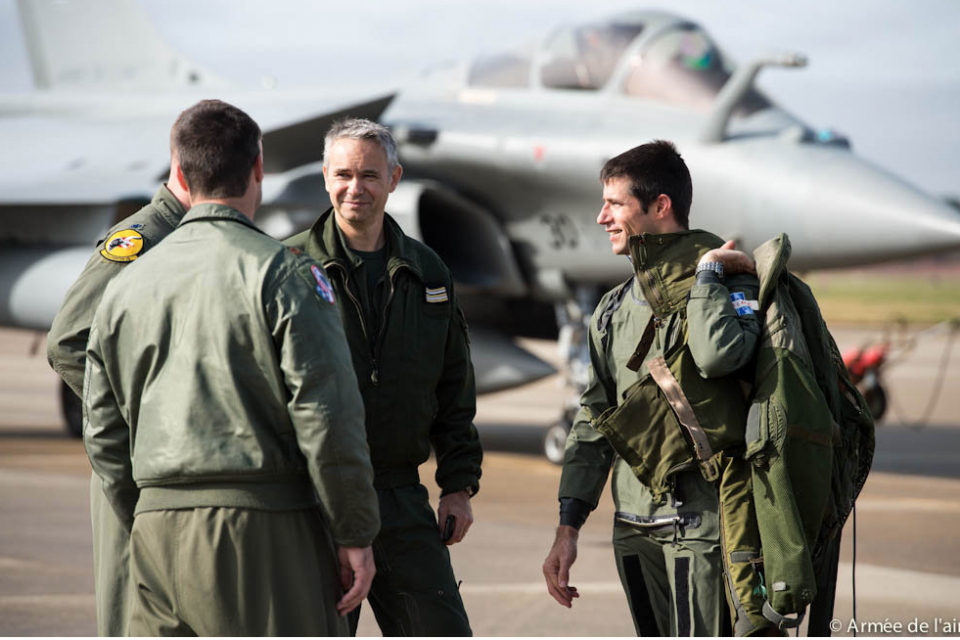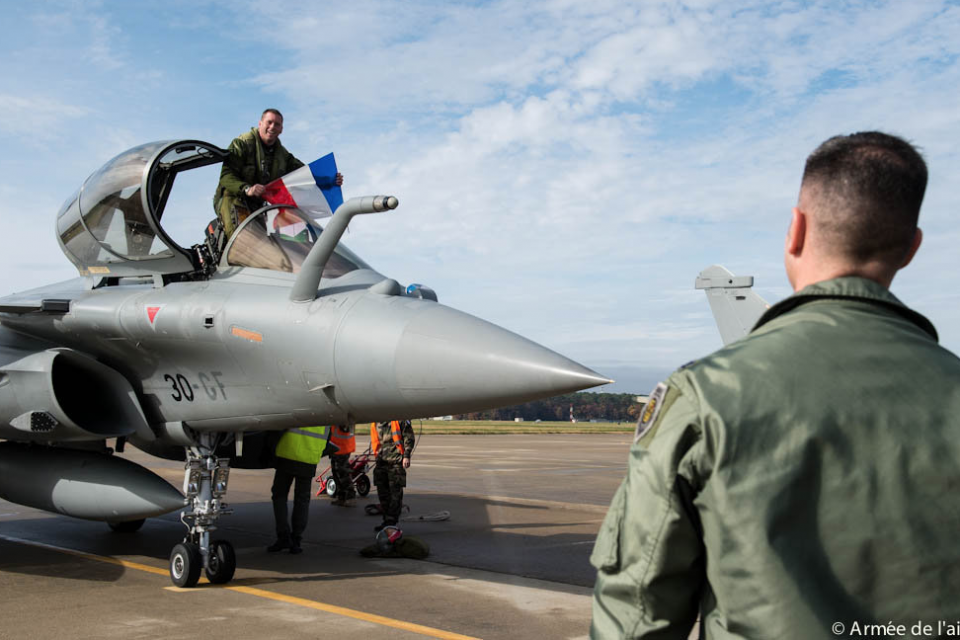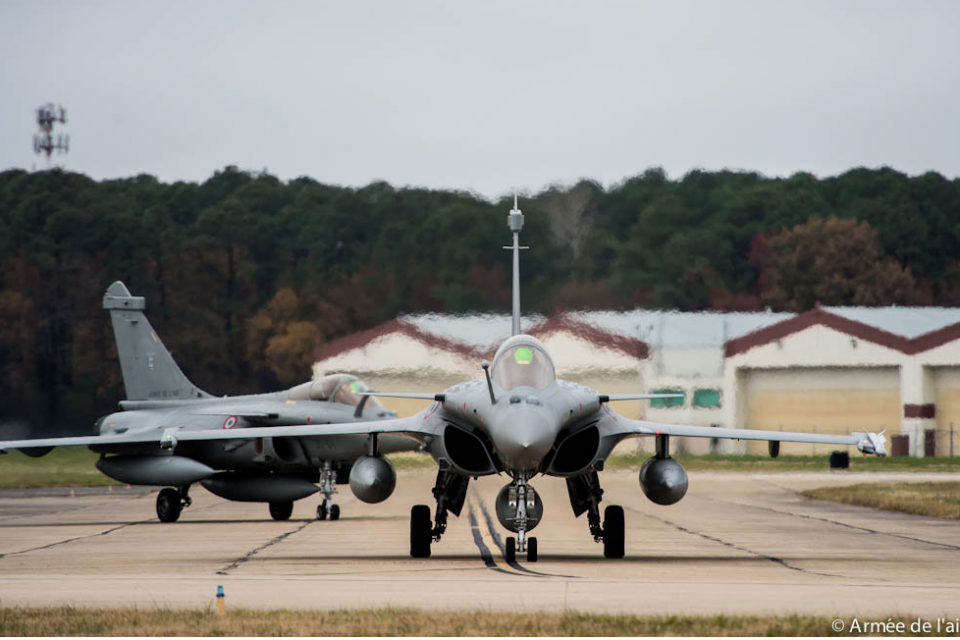2015-12-04 In late October 2015, we had a chance to sit down and talk with key members of the Air Combat Command (ACC) staff about the evolution of the air combat force and the way ahead under the influence of new technologies coming into the force.
During that visit, we discussed the then forthcoming allied exercise at Langley where the F-22, the Typhoon and the Rafale will fly together.
Now those planes have arrived from Europe for the exercise.
Six Rafales, eight Typhoons, along with two KC-135FR Stratotankers and two KC-30 Voyagers, made the trip across the Atlantic for the exercise that will last from Dec 2nd to the 18th.
The initial flights of the three aircraft together are starting today.
Second Line of Defense will be visiting Langley during the exercise and have a chance to talk with the various participants.
According to a piece published on 12/1/15 by Staff Sgt. J.D. Strong II:
U.S. Service members will partner with members of the United Kingdom’s Royal Air Force (RAF) and the French Air Force (FrAF) for the inaugural Trilateral anti-access/area denial exercise scheduled for Dec. 2-18, 2015, at Langley Air Force Base, Virginia.
The exercise, hosted by the 1st Fighter Wing (FW), will focus on operations in a highly-contested operational environment through a variety of simulated adversary scenarios. According to U.S. Air Force Col. Pete Fesler, the commander of the 1st FW, the intent of the exercise is to gain an understanding of the logistics, support requirements, capabilities, tactics, techniques and procedures associated with the integrated operation of coalition front-line fighters.
“The RAF and FrAF are our vital strategic partners and allies in the current fight against extremism, and will be in any foreseeable future conflict,” said Fesler. “The trilateral exercise gives us an opportunity to train together in realistic counter-air and strike scenarios. This training is critical to ensure that we have day-one interoperability for future contingency operations.”
According to Fesler, international exercises like the Trilateral Exercise have helped the 1st FW learn to work with coalition partners in the past, such as during the Western Zephyr exercise in 2015, where the 1st FW worked with the RAF to enhance joint capabilities.
More than 500 people will be involved in the exercise, consisting of approximately 225 personnel from the U.S. Air Force, 175 from the RAF and 150 from the FrAF.
According to Fesler, partnering with coalition forces for training is critical to ensuring the 1st FW and its allies are ready to execute their mission when called upon.
The exercise will not only feature the U.S.’s Raptor, but also the RAF’s Typhoon and the FrAF’s Rafale as primary aircraft. The Trilateral Exercise will be the first time these coalition aircraft have flown together. Adversary aircraft will be replicated by the U.S.’s F-15E Strike Eagles and T-38 Talons. The U.S.’s Airborne Warning and Control System, as well as U.S. and FrAF tankers will also provide support during the exercise.
In the ACC interview cited above, the A-10 pilot in the room underscored, fifth generation really is not about its tactical effect, it’s about the operational impact of fifth generation on the entire fleet.
“Prior to the F-22, the individual pilot could only have a tactical effect.
Now the pilot can have an operational effect. I can take a much smaller package to have a larger operational effect, which can have strategic impact.
Four F-15Cs or 4 A-10s showing up does not have a strategic effect; 4 F-22s can have such an effect.”
A key reason this is true is that the F-22 is the first of the fifth generation multi-tasking aircraft.
What this means that it can change its role during a mission appropriate to the combat task.
Or put another way, the F-22 was designed for air superiority but it has redefined the operational meaning of air superiority away from a classic air-to-air role and become an operational impact aircraft enabling the entire air combat force.
The F-22 pilot in the room discussed how the aircraft has been used in the Middle East, and highlighted its flexibility – shifting from dropping weapons, to providing force protection, including dealing with ground based threats to the air combat force, to becoming the ”quarterback” in contestable airspace.
Put in other terms, the F-22 is providing the mission assurance role for the air combat force.
This transformation has simply become part of operational practice; it is the quiet transformation infusing the USAF and the air combat force.
The F-22 pilot highlighted that although sensor fusion can be considered a key attribute of fifth generation, the ability to fly where you needed to go was a real discriminator.
“It is about stealth enabled sensor fusion; it is not just about generating information in the battlespace. There are places where legacy aircraft simply can not go and survive.”
The USAF started by shaping tactical integration of the F-22s with the F-15s.
That was a key effort of the first five years of the life of the F-22.
As one the ACC participants highlighted: “We started by flying F-22s with F-15s; the F-22s went out fired their weapons, had their impact and returned home.
The F-15s then fended for themselves with not always good results in our exercises.
It did not take us very long to grasp that integrated tactics were required where the F-22 enabled the F-15s and the F-15s supported the F-22s.”
The last five years have seen this type of tactical integration broaden out from the classic air superiority role to encompass the broader force to enable the operational effects, which the A-10 pilot spoke about.
This exercise is about tactical integration of three fighters who have more than 10 operational years under their belts, and focused on more effective tactical integration.
Also, see the following:
The first four photos in the slideshow are credited to the French Air Force and the next four the US Air Force.
The final two photos show the UK’s new 330 tanker first from the French side and then the USAF side.


